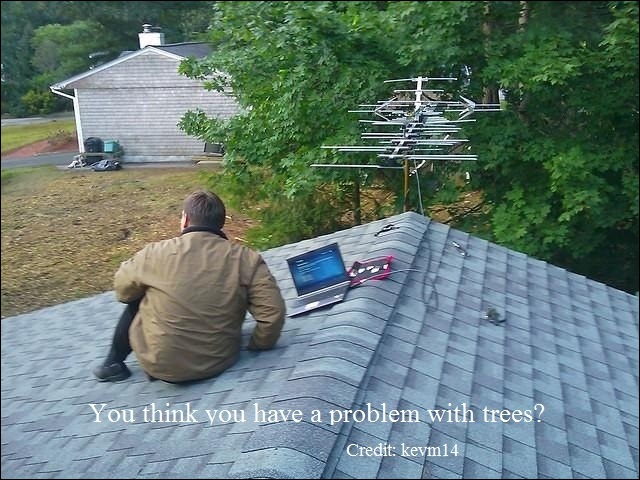Quote:
Originally Posted by Dagwood

Where's @rabbit73?
|
I'm still around, but I'm not as active because I'm now 90. I keep track of the ATSC 3.0 DRM problem on the AVS Forum and SDRs on the RadioReference Forum.
https://www.avsforum.com/threads/ats...95418/page-391
https://forums.radioreference.com/fo...ned-radio.193/
Quote:
|
I'm literally in a woods and am surrounded by thousands of acres of woods, plus there is a hill between me and the OTA transmitters. The signals bend enough for me to get them.
|
Yes, the signals have to bend down from the crest of the hill to your location, so your reception will never be 100% reliable. You are at the mercy of atmospheric conditions.
Your HILL:
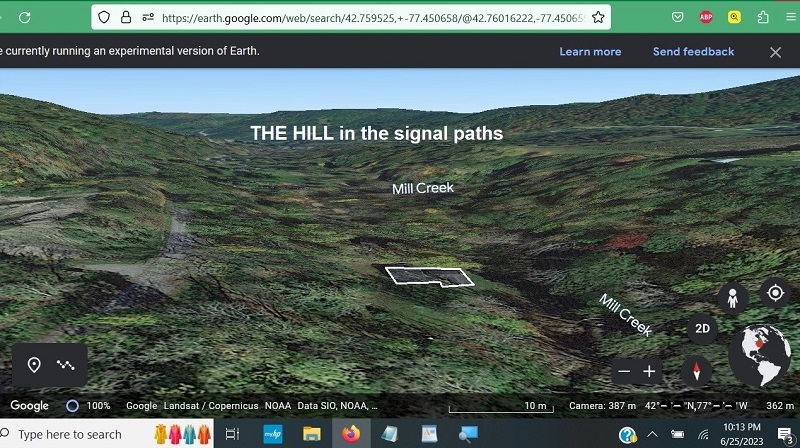
The knife-edge effect scatters the signals at the crest of the hill:
https://standards.tiaonline.org/mark...5F%5BQB%2BK%0A

This shows the scattering:
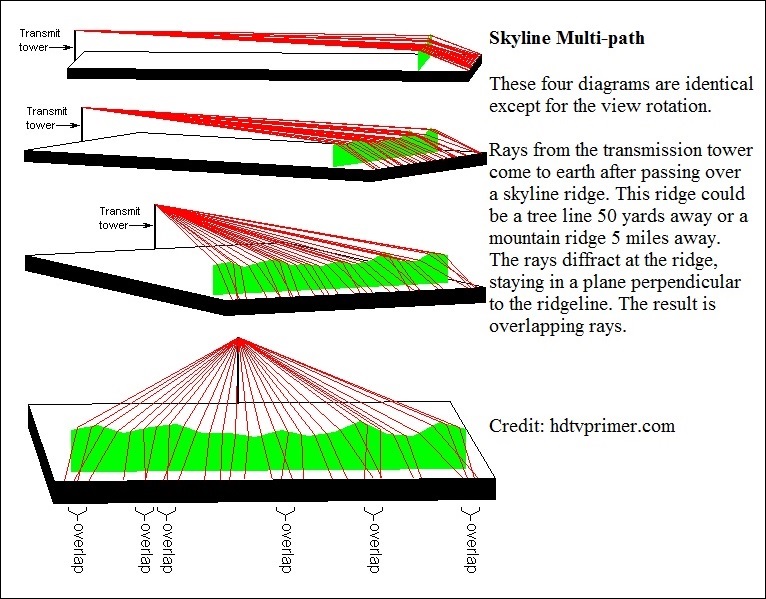
which creates overlapping fields:
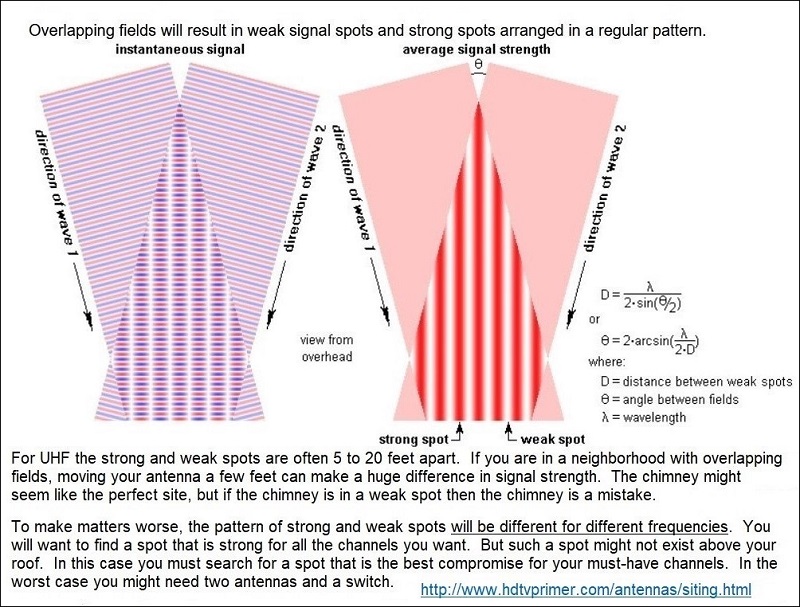
This is the rabbitears.info signal report for your location:
https://rabbitears.info/searchmap.ph...udy_id=1012794
Extract from report:
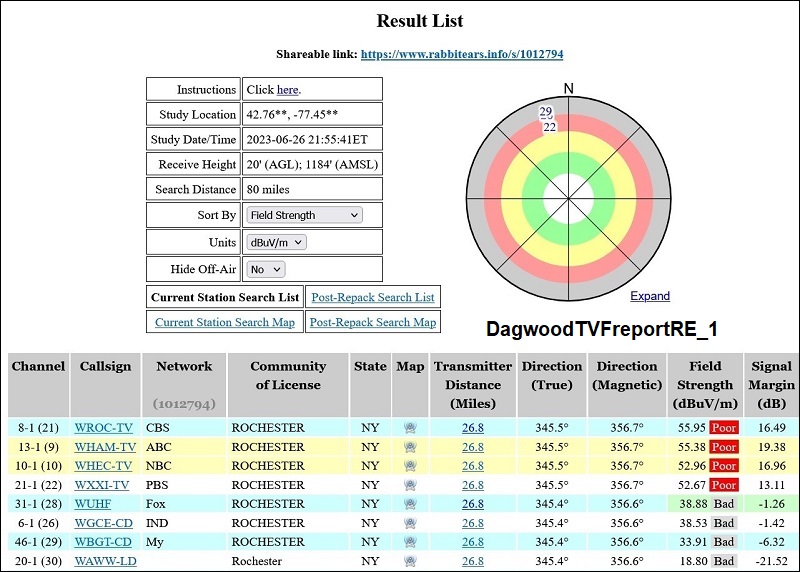
Using outdated TVFool data, I tried different antenna heights:

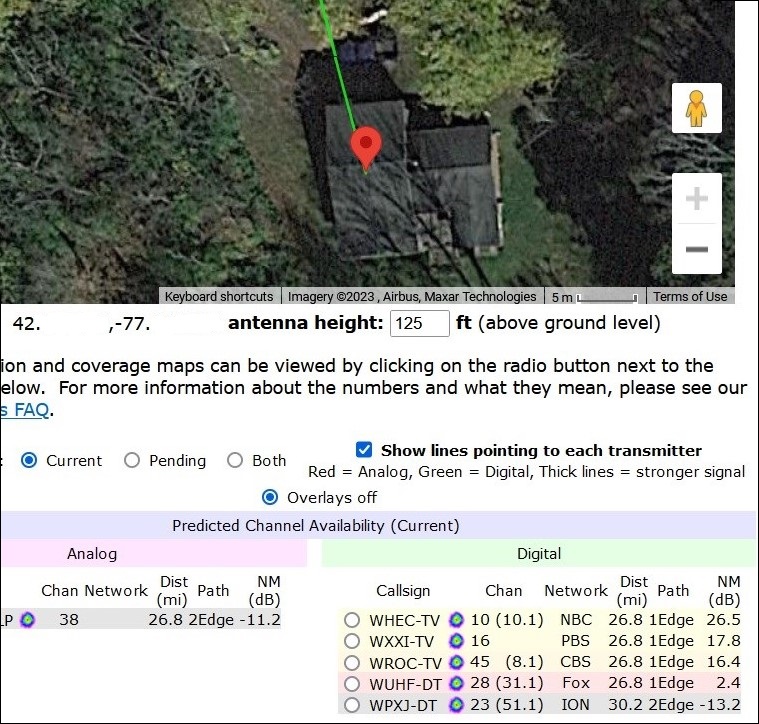
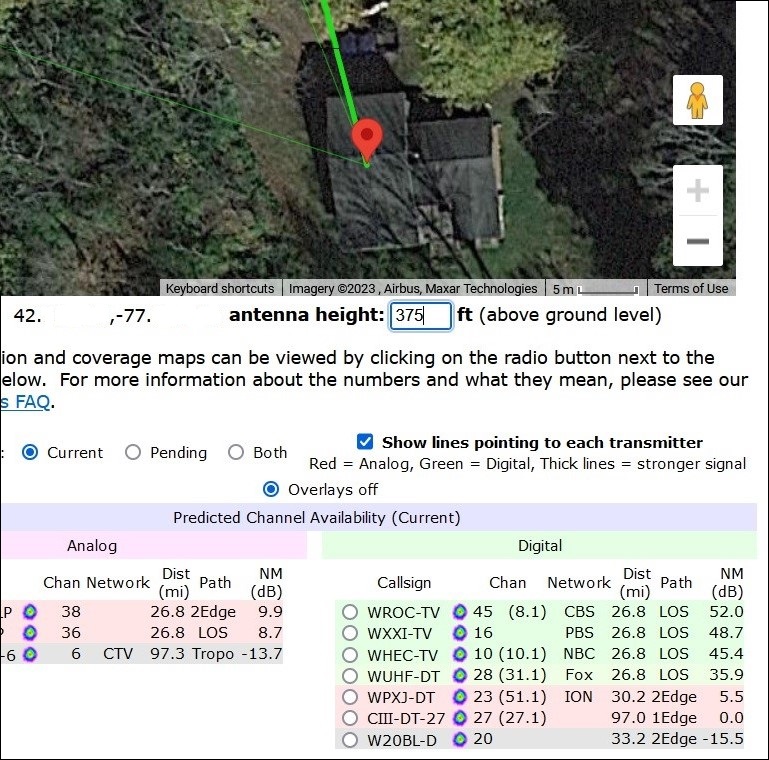
After making sure you have the best antenna for your location and all the connections are good, you have three choices:
1. Get used to what you are able to receive with the present antenna.
2. Move to a better location for OTA reception.
3. Put up a tower, after making a clear cut of the nearest trees in the signal path. You can sell the timber to help pay for the tower.
Quote:
If the antenna is behind a tree, it is in overlapping fields: a weak field that passes through the tree plus a weak field that is diffracted around the tree. Overlapping fields are complicated, with strong spots and weak spots. This will be true even if the tree is not a perfect sphere. If you get a UHF antenna to work behind a tree, you will likely see dropouts when the wind blows because the strong and weak spots will move around as the tree deforms. Even in a good-signal neighborhood it is inadvisable to put a UHF antenna behind a tree.
The farther away a tree is, the less of a problem it is. For far away trees, assume no signal penetrates the tree, and reception will be by diffraction around the tree. Trees block 100% of satellite signals.
|
Quote above from:
http://www.hdtvprimer.com/antennas/siting.html
Example of nearby-tree problem:
Kevin didn't get many signals with his antenna aimed directly at the tree. He had to mount his antenna at the other end of the roof and rotate his antenna to the left to pick up the signals diffracted around the trees:
